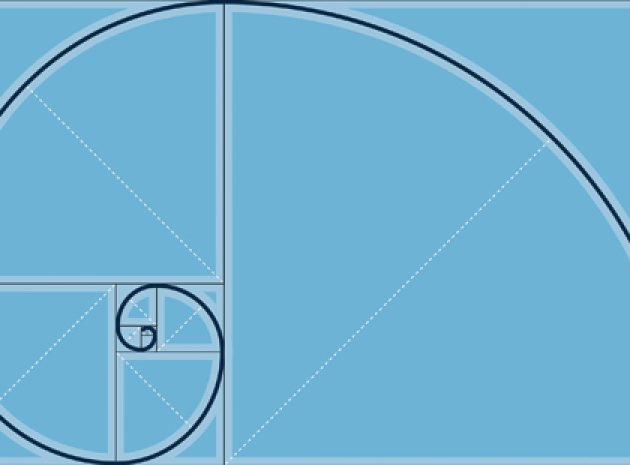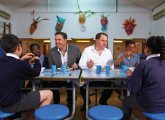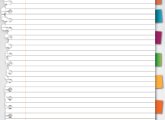The revelation that A-level maths is becoming more popular, with a 3.8% increase in A-level entries this year, is good news for our economy, which is heavily reliant on having a mathematically literate workforce. The large amount of science and mathematics that we see on television and read about in the newspapers is indicative of a real appetite among the public, including school children, for learning about fundamental aspects of STEM subjects. News items on nuclear science developments, underpinned by CERN and the discovery of Higgs Boson, have helped highlight the importance of maths and its applications. It is vital that we don’t lose this momentum and that the education system is geared to nurturing the next generation of mathematicians, inspiring more young people to understand the importance of maths and the doors it can open.
The story so far
Scientists such as Brian Cox, Jim Al-Khalili and myself are frequently being invited to present programmes on mainstream television and radio aimed at highlighting the wonderment and practical applications of maths and science. However, there is still much room for improvement in the way maths is taught in schools. We need to capitalise on the growing interest in the subject by creating a curriculum that puts maths into context and conveys the big stories and ideas.
The greatest barrier to improving the maths skills of our young people is the overly technical way in which the subject is taught. There is a misconception that we should only teach maths that people will use in their daily lives – but there are more exciting applications of the subject than working out tax returns. The same hang-ups are not as prevalent in subjects such as physics and biology; my son is currently learning all about fundamental particles like quarks and electrons, which I doubt many people will use day-to-day. Children are being exposed to fascinating science. So why aren’t we telling the exciting tale of maths? People seem to think that maths arrived in a textbook, whereas it has a back-story with interesting characters and events, and providing context is how you will encourage students to go on and learn the technical aspects of the subject.
The history of maths can provide a thrilling and visual narrative. I have recently returned from filming a television series in Egypt where the construction of the pyramids gives us an insight into the ancient use of calculus. Teaching this example in a classroom could help bring the formula for the volume of pyramid (base area × height)/ 3 to life.

World party
The increasingly global economy in which we operate means that our maths skills should be measured against the other world players. Emerging economies such as China and India realise the economic importance of producing more mathematicians, which is why their governments are investing heavily in maths education. Part of the reason our maths skills are trailing behind many Asian countries is down to a difference in attitude. Nobody in India and the Far East would admit to being poor at maths, because it holds the same stigma as being illiterate. In the UK, however, it’s become acceptable.
When developing the online maths gaming resource Mangahigh, I was dismayed at how much of the work had to be outsourced abroad because there was a real lack of good local mathematicians. Employers in the UK are desperate for candidates with good maths skills. Having a ‘maths brain’ demonstrates an ability to problem solve, think logically and grasp abstract concepts; these are very employable qualities.
Added value
Fortunately, I do believe attitudes to maths are starting to change. Many young people are beginning to realise that maths skills command respect and power in some cases, and the subject is attracting an element of ‘geek chic’. After all, Google was set-up by two mathematicians, and maths is behind some of the world’s seminal technological inventions.
It is a positive sign that the maths curriculum is under review and hopefully the reform will broaden the scope of the syllabus to improve young people’s maths skills.
Teachers face the challenge of large class sizes with differing abilities against a background of rushing children through a compulsory maths curriculum that abruptly ends at 16 years old. The human brain still has a lot of maturing to do at that age and a mathematical concept that may seem baffling at 16 can make sense if revisited two years later. Studying maths up to age 18 seems to work in other countries, so it is definitely worth exploring. Even if some children don’t take it as a specialist subject, it would be beneficial to practise maths in some form beyond GCSE.
I am a strong advocate for splitting maths into two disciplines, the way English is divided into language and literature elements. One part could cover the great history and narrative of maths, its development and context, while the other would focus on the technical teachings. It would be a brave move by any government but could help inspire more young people to understand the value of the subject and progress it to a higher level. There are so many stories in maths – and if we want to grow our economy on the strength of our STEM skills, then we need to start telling them.
Beyond the box
Taking maths outside the classroom can be an exciting way to teach the curriculum. There are so many examples of the subject in action tied up in our urban environment that we take for granted. I have recently started a project called Maths in the City, which operates walking tours around London and Oxford (mathsinthecity.com). These help make lessons in symmetry, geometry and architecture more exciting and accessible for young students.
About the expert
Marcus Du Sautoy is the 2012-2013 president of the Mathematical Association and Charles Simonyi Professor for the Public Understanding of Science at the University of Oxford. He will be speaking at the ma annual conference entitled ‘telling the great stories of mathematics’ in April 2013. Visit m-a.org.uk for more information.










